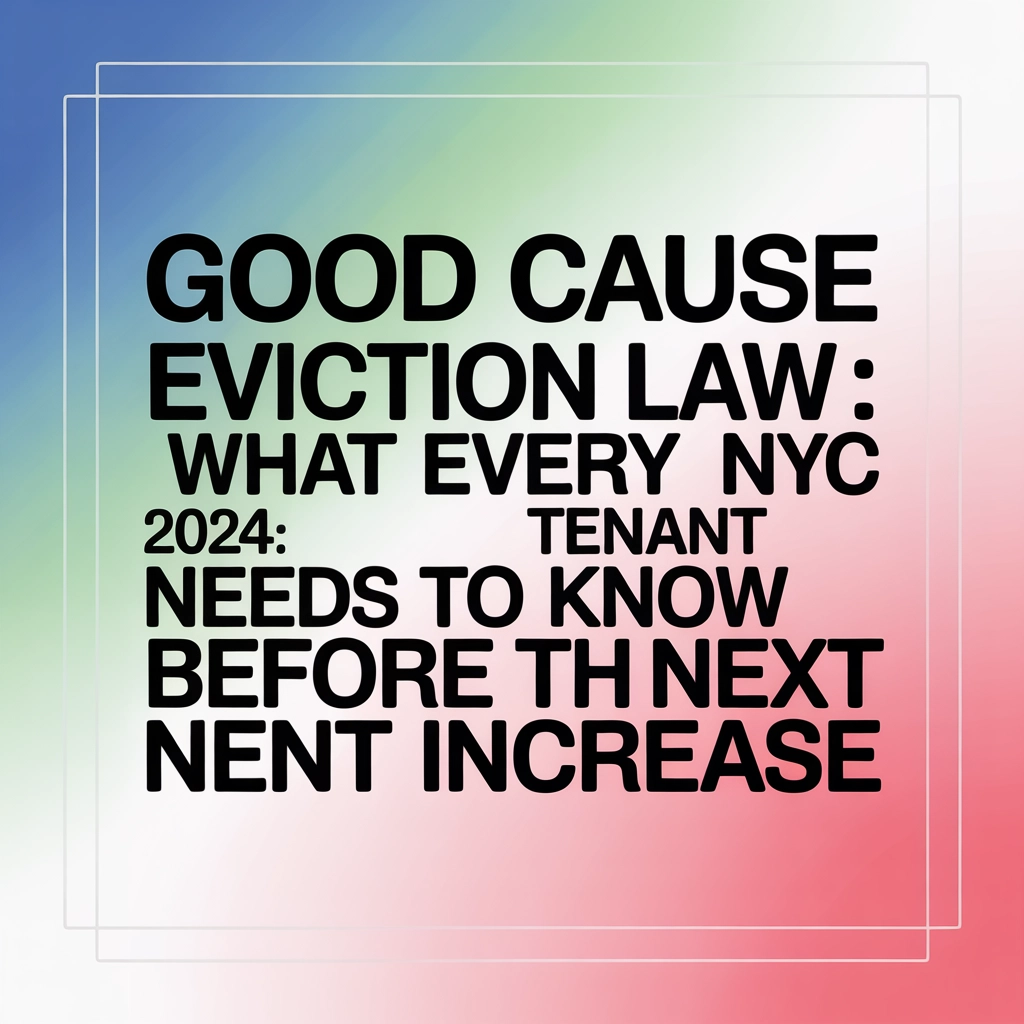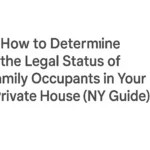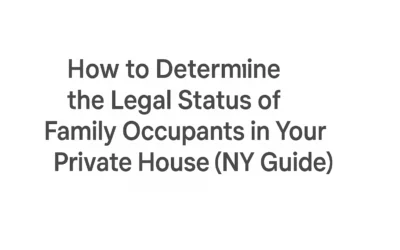Please note: This article is authored by Roland G. Ottley, Esq.
In the ever-evolving landscape of New York City's housing market, tenants have long found themselves navigating treacherous waters, where the threat of arbitrary evictions and exorbitant rent increases loomed like storm clouds on the horizon. The passage of the Good Cause Eviction Law in 2024 represents a seismic shift in this paradigm: a beacon of protection that fundamentally alters the balance of power between landlords and tenants in market-rate apartments.
This landmark legislation, which took effect on April 20, 2024, stands as more than mere statutory text; it embodies a recognition that housing stability forms the bedrock upon which individuals and families build their lives. For the countless New Yorkers dwelling in unregulated apartments, this law emerges as both shield and sword: protecting against unreasonable displacement while empowering tenants to challenge excessive financial burdens.
The Architecture of Protection: Understanding the Law's Foundation
The Good Cause Eviction Law casts its protective embrace specifically over New York City, though it extends an invitation to other municipalities throughout the state to adopt similar protections through their local legislative processes. This geographic limitation underscores the law's targeted approach to addressing the unique challenges faced by tenants in America's most expensive rental market.
At its core, the legislation extends protections previously reserved for rent-regulated units to the vast expanse of market-rate apartments: a revolutionary concept that transforms the legal landscape for hundreds of thousands of tenants. No longer do occupants of unregulated housing find themselves at the mercy of landlords wielding unchecked authority over lease renewals and rental pricing.

However, the law's architects crafted specific exemptions that tenants must comprehend to determine their eligibility for these protections. Properties owned by small landlords: those possessing ten units or fewer statewide: remain beyond the law's reach, as do owner-occupied buildings with no more than ten units. The legislation also excludes sublet arrangements, rent-regulated and affordable housing units already protected under existing statutes, condominiums, cooperatives, and units receiving certificates of occupancy after January 1, 2009, for a period extending up to thirty years.
Perhaps most significantly, units commanding monthly rents exceeding 245% of the U.S. Department of Housing and Urban Development's fair market rent fall outside the law's protective umbrella, ensuring that luxury housing maintains its market-driven pricing structure.
The Local Rent Standard: A Mathematical Shield Against Excessive Increases
Central to the law's protective framework lies the concept of the "local rent standard": a carefully calibrated formula that serves as the dividing line between reasonable and unreasonable rent increases. This standard, recalculated annually, equals the rate of inflation plus five percentage points, with an absolute ceiling of ten percent.
This mathematical approach transforms what was once the landlord's unilateral prerogative into a regulated process subject to legal scrutiny. Any rent increase surpassing this threshold triggers the law's protective mechanisms, providing tenants with substantive grounds to challenge excessive demands in Housing Court.
The enforcement of this standard operates through the judicial system, requiring tenants to actively assert their rights rather than relying on administrative oversight. This structure places the burden of enforcement squarely upon the shoulders of those seeking protection, emphasizing the critical importance of tenant awareness and legal preparedness.
The Good Cause Fortress: Protection Against Arbitrary Displacement
Beyond its rent increase protections, the law erects formidable barriers against arbitrary evictions and lease non-renewals. Landlords can no longer simply choose not to renew a lease or initiate eviction proceedings without demonstrating "good cause": a legal standard that requires substantial justification for such actions.
This paradigm shift represents perhaps the most profound change introduced by the legislation. Market-rate tenants, historically vulnerable to displacement at the landlord's whim, now possess the right to remain in their homes absent compelling reasons for their removal. The law requires landlords to articulate and prove their grounds for eviction, transforming the courtroom from a forum of inevitable displacement into an arena where tenant rights receive genuine consideration.
The "good cause" standard encompasses various scenarios, from tenant misconduct to legitimate business needs, but crucially eliminates the arbitrary exercise of landlord authority that previously characterized the market-rate rental sector.
Navigating the New Landscape: Essential Knowledge for Tenants
Documentation: The Foundation of Protection
In this new legal environment, meticulous documentation assumes paramount importance. Tenants must maintain comprehensive records of all communications with landlords, including notices, correspondence, and verbal conversations. Current rent amounts, lease terms, and the history of any increases should be carefully preserved, as these materials may prove crucial in challenging excessive rent demands or defending against questionable eviction attempts.
The law's enforcement mechanism relies heavily on tenant-initiated court proceedings, making thorough documentation the cornerstone of effective legal action. Every notice received, every conversation held, and every payment made becomes a potential piece of evidence in the protection of one's housing rights.

Understanding Your Rights and Limitations
Tenants facing rent increases exceeding the local rent standard possess the right to challenge such demands through Housing Court proceedings. However, this right comes with responsibilities: tenants must be prepared to present their case effectively and demonstrate that the proposed increase violates the statutory standard.
The law applies to all new leases and lease renewals executed after April 20, 2024, creating a clear temporal boundary for its protections. Tenants receiving renewal offers or rent increase notices after this date likely fall within the law's protective embrace, provided they meet other eligibility requirements.
The Imperative of Legal Counsel
Given the complexity of housing law and the adversarial nature of landlord-tenant proceedings, tenants contemplating challenges under the Good Cause Eviction Law should strongly consider seeking professional legal guidance. The stakes: one's home and financial stability: demand the highest level of advocacy and representation.
At The Ottley Law Firm, PC, our commitment to tenant rights extends beyond mere legal representation to encompass comprehensive advocacy for housing justice. Our landlord-tenant practice recognizes that housing stability forms the foundation of individual and family well-being, making effective legal representation not merely a service but a moral imperative.
The Verification Process: Confirming Your Coverage
Before assuming protection under the Good Cause Eviction Law, tenants must carefully evaluate their specific circumstances against the law's eligibility criteria. This assessment begins with determining whether the landlord falls within the small landlord exemption: a calculation requiring knowledge of the total number of units owned statewide, not merely within a single building or neighborhood.
The rent threshold test presents another crucial checkpoint, requiring comparison of current rent levels against 245% of HUD's fair market rent for the relevant area. This calculation may fluctuate annually as HUD adjusts its fair market rent determinations, necessitating periodic reassessment of eligibility status.
Strategic Considerations for Tenant Response
When confronted with potentially excessive rent increases, tenants must weigh their options carefully. The decision to challenge an increase in Housing Court carries significant implications, including potential legal costs, time commitments, and the adversarial nature of litigation against one's landlord.
However, the alternative: accepting unreasonable rent burdens: may prove equally detrimental to long-term housing stability and financial well-being. The law provides tools for protection, but their effective utilization requires both courage and strategic thinking.
The Broader Implications: A New Era in Tenant Rights
The Good Cause Eviction Law represents more than incremental reform; it signifies a fundamental recognition that housing security constitutes a basic necessity requiring legal protection. By extending these safeguards to market-rate apartments, New York City has acknowledged that the arbitrary exercise of landlord authority undermines the social fabric that binds communities together.
This legislation emerges as part of a broader movement toward housing justice, joining other protective measures in creating a more equitable rental market. Its success will depend not only on the strength of its legal provisions but also on tenant awareness, advocacy, and willingness to assert their newly recognized rights.
The path forward requires vigilance, preparation, and when necessary, the courage to stand firm against unreasonable demands. For New York City tenants, the Good Cause Eviction Law offers unprecedented protection: but only for those who understand its provisions and remain prepared to invoke its safeguards when circumstances demand action.
In this new era of tenant rights, knowledge truly becomes power, and the informed tenant stands as the greatest beneficiary of this transformative legislation.




0 Comments